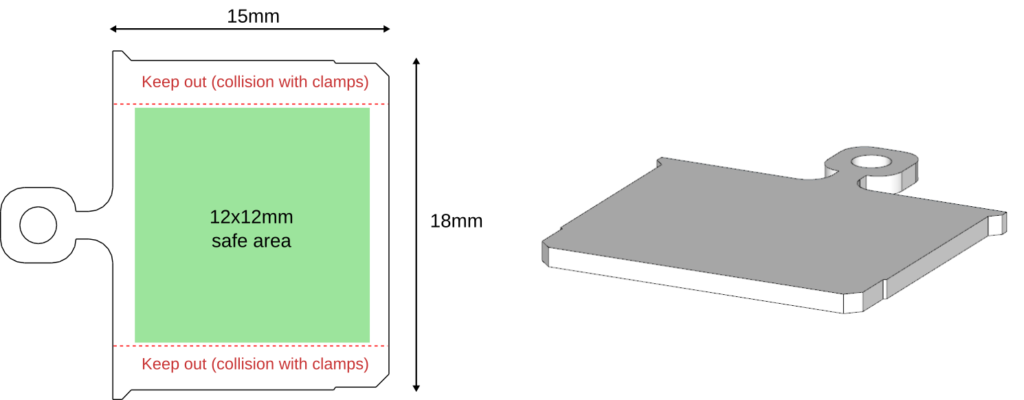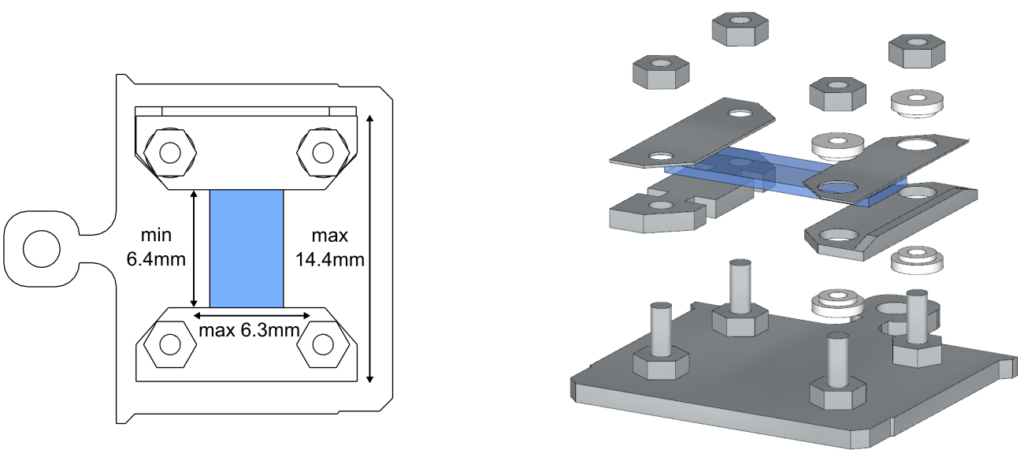Important information when writing proposals
For current information about proposal calls, see the corresponding page under User access > Call for proposals
Important information for those considering submitting proposals:
- Electrical contacting of samples on the A-station measurement manipulator is no longer possible. The receiver clamping has been redesigned to be more robust and more forgiving of sample plate thickness variations. However, this change involved removing the capability to make two electrical contacts at a specific azimuthal angle. Biasing of the entire sample with respect to the analyzer remains possible.
- The spin-resolved ARPES endstation currently only has a 4.5-axis manipulator. This means motorized (X,Y,Z,Polar) and screwdriver azimuth adjustment at the transfer level). The analyzer is capable of deflection, which slightly eases the difficulties this causes. An upgrade to a 6-axis cryomanipulator will be procured during 2024, but for now consider carefully whether your proposed experiment is still possible with this restricted freedom for alignment, and explicitly address this point in your proposal.
- The spin-resolved ARPES endstation has demonstrated baseline functionality and formally left commissioning, but is still very new. You are not yet applying for a perfect, polished beamline. We’re working hard, but it’s possible, maybe even probable that the control and measurement software will still cause frustration. For this reason short allocations are not offered, see the note below.
- MAX-IV has changed to 6-day operation, but only for some weeks. Typically allocations are made in terms of a half-week (2.5-3 days) or a full week (5-6 days). Since the number of shifts available won’t be known until the scheduling is complete, we advise all users to apply for 15 shifts if they want a half week and 30 shifts if they want a full week. In all cases where the beamtime ends up on a 6-day week, the allocation will be rounded up to match the available time.
- Shorter beamtimes are now being considered. Until fairly recently, Bloch awarded only full week beamtimes. To increase access, we will now also consider shorter half-week beamtimes. You can either directly propose a reduced scope experiment, or apply for a full 5-day experiment but add a note about whether you could consider a shorter allocation and what the consequences of that would be for your proposal. If you end up being ranked close to the cutoff, this could make the difference between being awarded beamtime or not. However, at this time we consider half-week spin beamtimes to be unrealistic unless you are already very experienced with the endstation.
- In addition to the basic information available on this website, the full beamline documentation page is available at https://blochdocs.maxiv.lu.se/
We warmly encourage anyone seeking clarification about our capabilities (or even just wanting to discuss ideas for experiments) to write to the beamline team: bloch@maxiv.lu.se.
Writing proposals
Bloch is heavily oversubscribed, so proposals must be compelling and carefully written in order to be chosen by the advisory committee. You are always welcome to send proposal drafts to the beamline staff ahead of the deadline if you would like feedback, but note that the evaluation is by an independent group – the beamline staff do not get a vote.
When it comes to proposal writing, your job it is to make it very easy for a reader, who is at the level of a senior scientist but might not be familiar with your specific system or physics, to quickly understand your experiment. This means that you must cover:
- What you want to do (i.e. what exactly will you measure)
- Why that would be an interesting thing to do (i.e. what is the science question)
- How this relates to prior studies (i.e. will this advance the field or just repeat something that has already been done?)
- What the expected results are, and how they would answer your science question
- Whether the experiment (including analysis) is likely to work. Showing preliminary data or characterization measurements is usually a good way to address this (e.g. could there be doubts about being able to grow/prepare the sample? Will you be trying to disentangle features or processes that might not in fact be possible to disentangle with the experiment proposed?)
- All important information about the system in question (Are there mixed domains? If so, what is the domain size? At what temperature does that transition you are discussing happen?)
- Why you need Bloch (i.e. could this be done in a home lab with a UV lamp or laser, or at a less oversubscribed beamline?)
- Whether it is technically feasible to do at Bloch (i.e. are you assuming a measurement temperature of 5K? Expecting to do SX-ARPES at 1000eV?)
Support facilities
| Optical microscope | Available in chemistry lab (SMZ745T) |
| Blank sample plates in Al or OFHC Cu | Available |
| Conductive epoxy | Available (Epotek H21-D) |
| Top posts for cleavable samples | Available in limited quantity and sizes, safer to bring your own if possible |
| Hot plates and microgram scales | Available in chemistry lab |
| Ultrasonic solvent cleaning | Available in chemistry lab |
| Wet chemical processing (acids/bases) | Available with advanced notice |
| UHV evaporators | Available with advanced notice (EFM-3, EF 40C1) |
Remote access
Remote access is always available in a hybrid mode (some people on-site, some people at home) and in rare cases full remote (nobody here in person, staff handle sample loading and transfers). Remote access users have full access to the measurement and beamline controls.
Practical details
We encourage users to arrive before the beamtime officially begins, in order to make all necessary preparations and be ready to start measuring as soon as the beam becomes available.
Sample plates
Both endstations at Bloch are configured for Omicron flag-style sample plates, both the regular flat type and the built up ‘direct heating’ type. We keep a large stock of copper and aluminium flat plates for experiments that do not involve heating above 100°C. For preparations involving heating above 100°C, molydenum sample plates of both types are available at the beamline for general use. These plates are shared among all users; if your experiment is particularly sensitive to contamination then you may need to either clean the plate first or bring your own.
Sample heights of at least 20mm are OK for ARPES. Transfer into the STM chamber will become impossible for sample heights over 5.9mm (measured from the surface of the sample plate)
If you bring your own sample plates, carefully check their compatibility with our systems. In particular:
- The side edges (marked below as ‘Keep out’) should be within about 150um of 1mm thickness. Elsewhere on the plate the thickness is not important.
- The hole in the tag makes transfers easier but is not mandatory
- The small ‘wings’ at the tag end of the plate make transfers easier (by preventing over-insertion) but are not mandatory
- Avoid having anything extend past the leading edge of the sample plate (i.e. the edge opposite the tag)


Source ports
‘Fast entry source ports’ are CF40 ports on the two preparation chambers where a gate valve and a short pumping T-piece have been installed. If a source is mounted to this port using a linear translator, it is possible to introduce it within 8-12 hours, without needing to vent the chamber. Contact beamline staff for details and size requirements if this will be of interest.